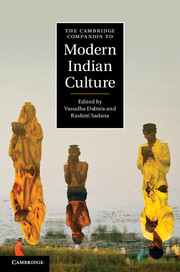5 - The politics of caste identities
from Part I - Cultural contexts
Published online by Cambridge University Press: 28 May 2012
Summary
Caste in India has been inextricably linked to the politics of caste from at least the late nineteenth century onwards. Since then, like religion, caste has gone through an identity-building process overdetermined by considerations of power. Like religious identities, caste identities are not ‘given’ but produced according to social cum political strategies and the contexts – often regional – in which they are evolved. In the following pages, I shall focus on the way lower castes' identities have been shaped and infused with new meanings according to an ethnicization process that was largely due to ideologies of autochthony (indigeneity), electoral politics and public policies such as state programmes of positive discrimination.
The transformation of caste during the British Raj
The caste system relies on hierarchical principles that Bhimrao Ramji Ambedkar (1891–1956) has defined very perceptively in terms of ‘graded inequality’ (see below): the Brahmins (the literati or priestly caste) come first in what is known as the first of the four varna (literally meaning ‘colour’), whereas the Untouchables (technically avarna, or outside of the caste schema) lie at the bottom of the social pyramid, and between these two extremes one can observe a clear-cut social hierarchy: the Kshatriyas (the warrior castes, former rulers and today largely made up of small and big landowners) and the Vaishyas (the merchants and traders) take the second and third positions respectively, but are still upper castes (the ‘twice-borns’) like the Brahmins, whereas the Shudras (cultivators, herdsmen and artisans) are situated between the twice-borns and the Untouchables.
- Type
- Chapter
- Information
- The Cambridge Companion to Modern Indian Culture , pp. 80 - 98Publisher: Cambridge University PressPrint publication year: 2012
- 2
- Cited by



